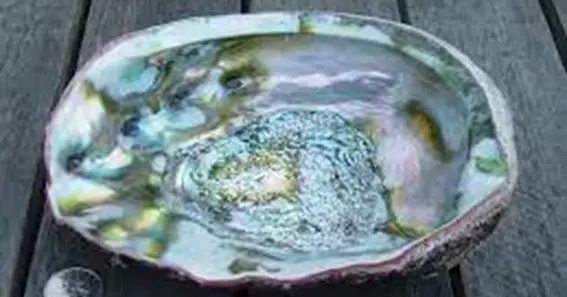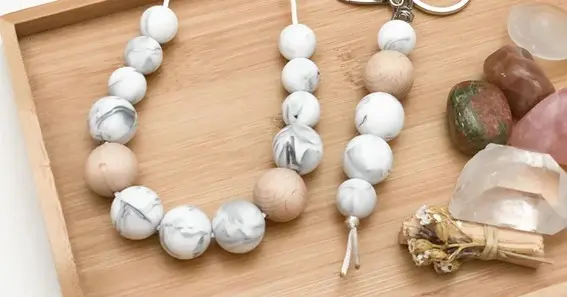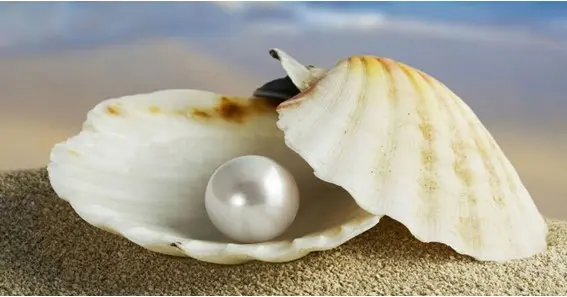What is mother of pearl? Mother of pearl is a gorgeous and robust natural material. Its iridescence is popular. Few materials are as durable and attractive as it is. This stunning material has attracted painters, designers, and nature enthusiasts for centuries. Its unique qualities make it a popular art, décor material, and research topic. Nature’s stunning structural and aesthetic design illustrates how well it can make things. In this article we discuss about what is mother of pearl and more about it.
What is mother of pearl?
Mother of pearl is an iridescent material, also known as nacre, that forms the inner layer of certain mollusk shells. Oysters and abalones have sparkling nacre, or mother of pearl, inside their shells. Aragonite, a solid calcium carbonate, and conchiolin, a protein that keeps things together, make up this natural material. The shell-making mollusc’s mantle secretes nacre.
The mother of pearls forms when snails excrete thin nacre layers. These layers form a complex structure over time. The mother pearl is strong and flexible due to the aragonite crystal arrangement in the conchiolin matrix. The material is robust and iridescent due to this stacked structure. Layers of light form a spectrum of colors, from gentle pinks and whites to brilliant blues and greens.
Timeless Elegance and Resilience of Mother of Pearl

To comprehend the mother of the pearl, you must study its origins, composition, and unique qualities. Molluscs depend on the mother of pearl scientifically. It shields the mollusc’s fragile body from predators and environmental hazards. This substance absorbs and spreads force, cushioning the mollusc and providing good protection. Its durability and beauty make it excellent for manufacturing safe items. As we already discuss what is mother of pearl now examine Mother of Pearl’s key areas.
Formation of mother of pearl
After know about what is mother of pearl, it is fascinating to see how mother of pearl is made in a mollusk’s shell. The snail forms a nacre from a thin organic coating. This layer accumulates, creating a multilayered structure. The process never stops, adding layers to the shell’s thickness and power. An irregular arrangement of tiny aragonite crystals and conchiolin makes up the nacre layers. Mother of pearl is flexible and sturdy due to its unique structure.
Aragonite and conchiolin are the mother of pearl’s major components. Seawater and other areas contain aragonite, a calcium carbonate solid that is strong and durable. Conchiolin, a string-like protein, keeps aragonite crystals together and makes them flexible. Mixing these two creates a strong, gorgeous substance. Different mollusks and environmental conditions affect the aragonite-conchiolin ratio.
Variance in color
Mother of pearl can vary in color and shape depending on the mollusk and location. The most prevalent color is off-white or creamy white, but it can also be pink, blue, green, or purple—distinct aragonite crystals and light movement cause distinct hues. In addition to water temperature and salinity, environmental factors can influence mother of pearl hue and pattern. This material is popular for jewelry and home art because each piece is unique.
Jewellery business uses

Mother of pearl is used in jewelry due to its radiance and flexibility. It is used in earrings, chains, rings, and bracelets. Due to the material’s natural sheen, any piece of jewelry seems classier. Mother of Pearl complements old and modern styles, so designers enjoy it. Gold or silver makes things look nicer and last longer. Another is pearl as an accent stone or adornment. To make larger pieces of jewelry stand out
Decor purposes
Art and crafts employ the mother of pearl for adornment and jewelry. Carvings, marquetry, and furniture employ it. The material’s radiance makes it popular for making household furniture look more expensive. Picture frames, mirrors, and boxes employ mother-of-pearl ornamentation. Lacquerware and embroidery look better with the material’s shine.
Past importance
Beauty and meaning have drawn people to the mother of pearl. Many cultures associate it with wealth, class, and spirituality. Ancient Egyptians and Greeks manufactured mother-of-pearl jewelry and other art. Religious items also employed it. Some cultures believed the mother of Pearl could heal or protect. Because it looks lovely eternally, people from all times and places love it, proving its popularity.
If you already know that what is mother of pearl, so know the maintain process is very essential. Mother of Pearl jewelry needs frequent care to stay beautiful. Clean gently with a soft cloth and soap. Avoid damaging the surface with strong chemicals or cleansers. Keep mother of pearl away from extreme temperatures and prolonged moisture, which can destroy its brilliance and structure.
Environmental impacts
Without protecting the plant, collecting the mother of pearl can affect the environment. Too much snail harvesting can harm marine ecosystems. Sustainability is essential for snail management and mother-of-pearl collection. Conservation measures and rules safeguard natural areas and reduce the environmental impact of the collection.
Conclusion
Nature makes wonderful things like the mother of pearl. Its beauty, strength, and flexibility make it popular in fine jewelry and visual arts. As we continue to enjoy the mother of pearl for its beauty and utility, we must remember to source it sustainably. We can preserve this natural marvel for future generations by appreciating and safeguarding it. In above we discuss about what is mother of pearl and explore more about it.
FAQ
Where does the mother of pearl come from?
Aragonite and conchiolin crystals produce the mother of pearl. The protein conchiolin supports aragonite crystals, which are calcium carbonate.
How is mother-of-pearl made?
When mantles discharge nacre, molds make the mother of pearl. It layers up to form a sparkling framework.
What is the Mother of Pearl used for?
Inlays, marquetry, jewelry, and visual arts use the mother of pearl. Its glistening makes many things look classier.
When should I clean mother-of-pearl jewelry?
Clean mother of pearl using a delicate cloth and soap. Avoid harsh chemicals and extreme temperatures to maintain its brilliance and prevent damage.
Can I use a fake mother of pearl?
Artificial items can resemble the mother of a pearl. These fakes appear like real nacre but lack its natural beauty.
Sources:
https://www.linjer.co/en-us/blogs/linjer-journal/what-is-mother-of-pearl-everything-you-need-to-know
https://www.lagunapearl.com/blog/2019/02/13/what-is-mother-of-pearl/










